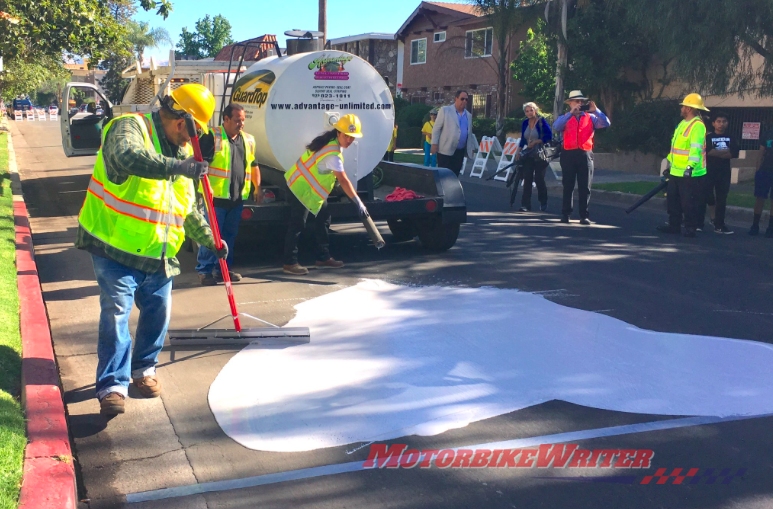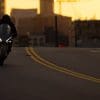Los Angeles is resurfacing roads with a light material to reduce heat, but it could also one day solve the problem of Australia’s melting tar which is slippery and dangerous for motorcyclists.
CoolSeal is a light-grey treatment that keeps streets and parking lots 10C degrees cooler than black asphalt.
Not only is it cooler for riders, but also grippier, according to the makers. And it may soon be tested on Australian roads.
Molten tar hazard
Melting tar is a slippery hazard for riders right around the country in summer.
Earlier this summer a Sydney rider crashed on a slippery molten surface at Mt Glorious, Brisbane.
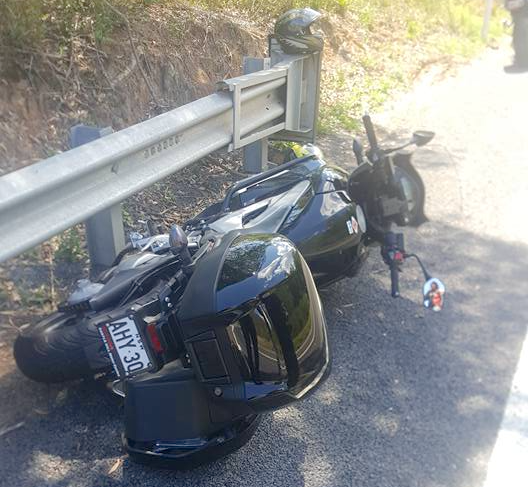
Queensland Transport and Main Roads (TMR) Department resurfaced the road.
But riders are claiming it is still slippery in hot conditions.
TMR is back working on the problem once again.
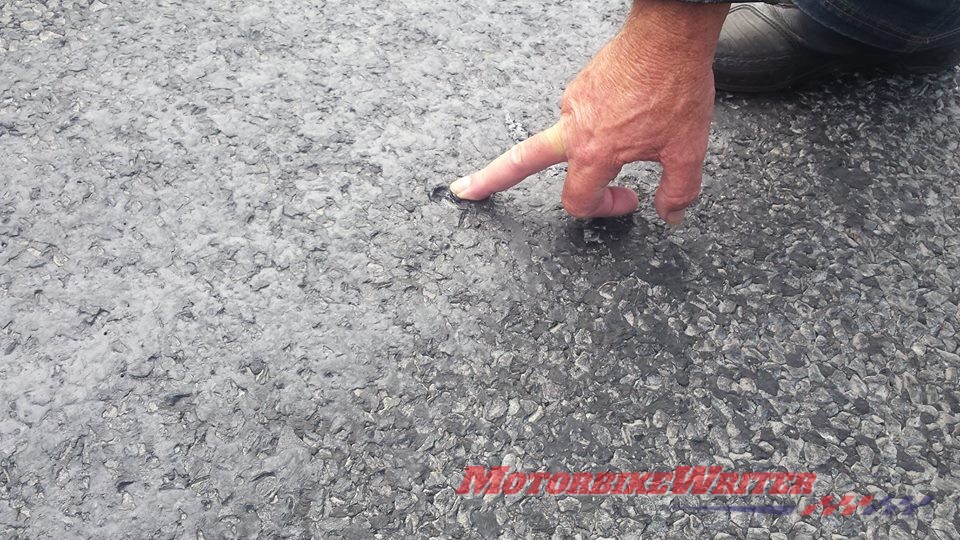
Improved traction
CoolSeal makers GuardTop say their substance is an asphalt-based sealcoat, not a paint. It is designed to reflect the sun’s rays as well as give good traction to roadways.
Director of Communications says Natasha Koleas says it is only applied to asphalt surfaces.
“It works just like traditional black seal coats and has outperformed other types of asphalt protection and slurry options,” she says.
“We’ve put down the product in 14 city districts of Los Angeles and in some office lots around Arizona, where riders have utilised the product on the road.”
CEO Bobby Koleas says the treatment improves traction for riders.
“There are many different types of asphalt surfaces and many different types of asphalt textures and mixes,” he says.
“From what we’ve seen with CoolSeal in the many different applications we’ve done in Los Angeles, CoolSeal actually improves both wet and dry traction. Skid resistance is something we are continually measuring with CoolSeal applications.
“It has not been specifically tested for motorcycle use but with the results we are seeing, we would expect improved traction for motorcycles.”
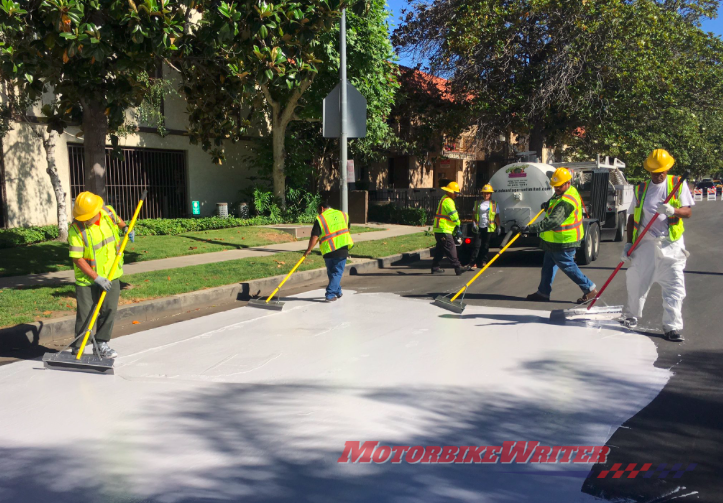
CoolSeal was initially developed for military air bases to keep spy planes cool while they rest on the tarmac. It also helped them being detected by satellite-mounted infrared cameras that measure heat.
However, CoolSeal is now being used to reduce suburban reflective heat and the need for air-conditioning.
Cool tar
Bobby says it goes on white, but dries to a light grey matte finish. (A motorcycle colleague in LA tells us it doesn’t increase glare.)
“It is designed to reflect the sun’s rays which prevents heat from building up on the surface and makes the atmosphere above the asphalt cooler,” he says.
“So, riders should actually feel cooler riding on CoolSeal as opposed to traditional asphalt.
Aussie tests
It could also make our roads grippier and safer for riders as Bobby says they are currently planning pilot projects in Australia.
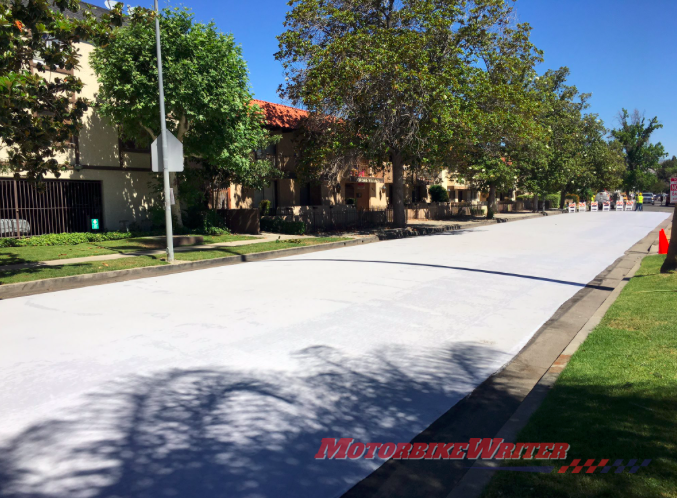


Independent Riders Group spokesman Damien Codognotto is calling for Australia to use CoolSeal.
“This is 2018 and summers are not going to get any cooler,” he says.
“There must be something that can be done to reduce this road safety problem. The question is why isn’t it being done?”
Duty of care
Maurice Blackburn Lawyers principal Malcolm Cumming says road authorities have a duty of care to “take all reasonable steps to make sure all their roads are safe for all motorists, including vulnerable road users”.
“It seems that a lot of the time the way road authorities do repair work is with complete disregard to any motorists not driving a car or other four-wheeled vehicle,” he says.
“Loose debris and poor road conditions (such as melting tar) may not be much of a hazard for most vehicles but they are extremely dangerous for riders.”


